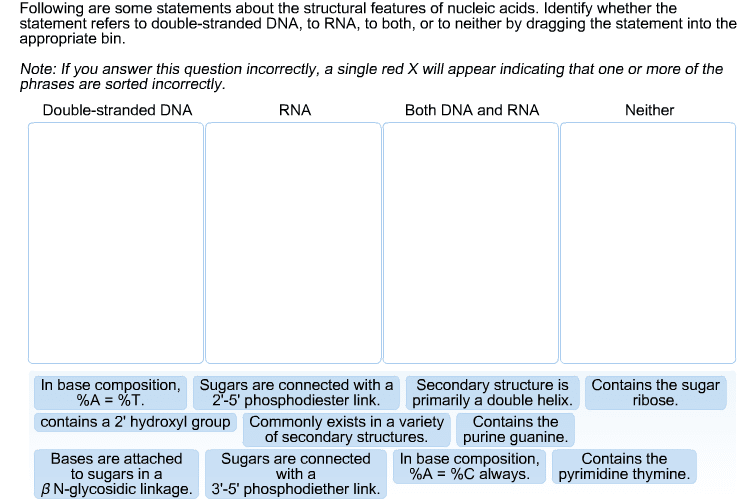CHE 211 Study Guide - Final Guide: Cytosine, Pyrimidine, Ribose

Organic Chemistry 2: Molecular Genetics
Nucleotides
• A nucleotide is formed when a nitrogen base of pyrimidine or purine forms a glycosidic
bond to the carbon-1’ of a sugar this sugar a either e riose or deoriose;
essentially the nitrogen base is attached to the sugar at the C1 location of the sugar
• A nucleotide is the repeating unit of the DNA or RNA polymer
• The itroge ase is attahed β to riose RNA or deoriose DNA
• The nucleotide will also contain a phosphate group at carbon-5’
• The sugar is phosphorlated at aro 5’
The Specific Ribonucleotide, Adenosine Triphosphate
Schematic labels the different portions of the molecule
indicating the change as sequential phosphoryl groups are
The name of the nucleotide is derived from the name of
the base and the ending -osine for purine and idine for
pyrimidine
For example:
adenine, a purine, and
ribose form a nucleoside
(not phosphate attached
to it) adenosine; however, when ribose
comes with the cytosine, a pyrimidine, the
nucleoside is called cysteidine
The formation of Adenosine can be seen on the left; adenosine is formed when adenine
reats with riose; the ase ad sugar are oeted with a β-glycosidic bond
The Structure of DNA and RNA
o A nucleotide forms when a reaction takes place between the hydroxyl group of the
sugar with phosphoric acid the formation of phosphoester bond
o Essentially a nucleotide forms when the aro 5’ – hydroxyl group of ribose or
deoxyribose in the nucleoside form a phosphate ester with phosphoric acid
o The other hydroxyl groups present on ribose and on deoxyribose can also form
phosphate esters, but these are not the phosphate esters nucleotides found in RNA or
DNA; remember we said earlier that a nucleotide will can have 1, 2, or 3 phosphates;
nucleic acids are polymers in which the repeating units (monomer) are nucleotides
find more resources at oneclass.com
find more resources at oneclass.com
Document Summary
Schematic labels the different portions of the molecule indicating the change as sequential phosphoryl groups are the base and the ending -osine for purine and idine for. The name of the nucleotide is derived from the name of pyrimidine adenine, a purine, and. For example: ribose form a nucleoside (not phosphate attached to it) adenosine; however, when ribose comes with the cytosine, a pyrimidine, the nucleoside is called cysteidine. The formation of adenosine can be seen on the left; adenosine is formed when adenine rea(cid:272)ts with ri(cid:271)ose; the (cid:271)ase a(cid:374)d sugar are (cid:272)o(cid:374)(cid:374)e(cid:272)ted with a -glycosidic bond. Rna molecules consists of alternating phosphate and ribose-sugar units. In certain sections of the backbone chain is the sequence of bases attached to the sugar units the sequence of bases distinguishes various dna molecules from each other and various rna molecules from each other.

